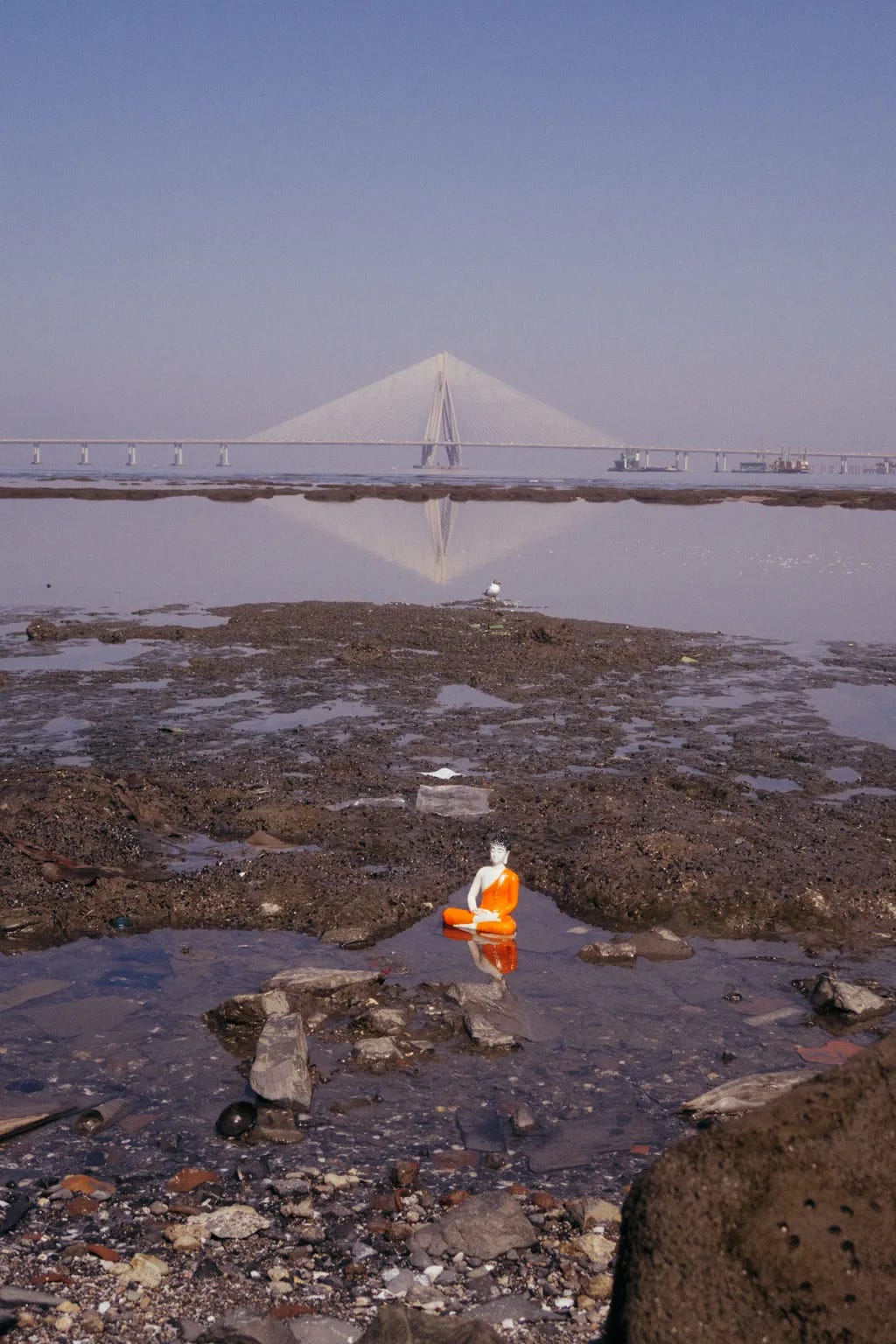Weekly Groundings are published every Friday to highlight the most interesting news, links, and writing I investigated during the past week. They are designed to ground your thinking in the midst of media overload and contribute to Handful of Earth’s broader framework. Please subscribe if you’d like to receive these posts directly in your inbox.
If you’re already subscribed and want to help the publication grow, consider sharing Handful of Earth with a friend.
“Professionals Are Losing Control of Their Work”
In last week’s Weekly Grounding, I highlighted the increased pressure on coders that has accompanied AI rollout in the workplace. This column by Financial Times reporter, Sarah O’Connor, puts this trend in historical perspective. Taking the British workplace as a case study, she writes that “people have reported a remarkable loss of control in their daily lives…We know this thanks to a government-funded survey of workers called the Skills and Employment Survey which has been running for almost 40 years. One of the most striking trends uncovered by the survey is a steep and steady decline in ‘task discretion’ since the 1990s. This is a measure of how much influence people say they have over their day-to-day work, such as which tasks to do and how to do them. In 1992, 62 per cent of surveyed workers said they had a great deal of task discretion. By 2024, only 34 per cent said the same.”
O’Connor continues: “As to the explanation, one clue is the trend’s persistence, which doesn’t seem to have been swayed very much by the gyrations of the labour market in recent decades, from the financial crisis to the pandemic. Alan Felstead, a research professor at Cardiff University who worked on the survey, told me the most ‘likely culprit’ was ‘the increased use of digital technologies’ in the workplace. ‘It’s not a coincidence that one has rocketed over that time period, and the other has gone in the opposite direction,’ he said.”
“Don’t Let Trump’s Brutality Fool You. The Internationalization of American Schools Is a Real Issue.”
In a guest op-ed for The New York Times, historian David A. Bell argues that “the fact that the Trump administration is handling the issue [of international students] crudely doesn’t mean it’s not a real issue.” He notes that “foreign students tend to come from considerable wealth and privilege; this is what allows them to pay the full U.S. tuitions. They have often graduated from elite schools that prepare them for the grueling American application process and, when necessary, teach them fluent English. So these students make U.S. universities look even more elite and possibly out of touch, at a moment when populist resentment of these institutions has facilitated the Trump administration’s destructive assault on the scientific research they conduct.
“Furthermore, while foreign students bring one sort of diversity to U.S. universities, it may not be as great as the diversity provided by Americans of different social backgrounds. A graduate of an elite private school in Greece or India may well have more in common with a graduate of Exeter or Horace Mann than with a working-class American from rural Alabama. Do we need to turn university economics departments into mini-Davoses in which future officials of the International Monetary Fund from different countries reinforce one another’s opinions about global trade?”
Bell concludes: “[A]s we look to the post-Trump future, it will be important for U.S. universities to recognize the genuine tensions and trade-offs of international enrollments and to balance their increase with more outreach to a larger range of domestic applicants—even if it comes at the cost of culinary diversity in the heartland.”
“Bringing the War Home”
At
, reviews Richard Beck’s book, Homeland: The War on Terror in American Life, and connects the War on Terror to the covid regime: “The themes explored in Homeland invite wider consideration of contemporary American life in the post-COVID era. The War on Terror laid the legal groundwork for the pandemic response’s subsequent militarized biosecurity state. With Americans turning against endless wars in the Middle East, an old enemy was recast as a perennial and invisible threat: microbes, whether of natural or artificial origin. Like terrorism, viral and bacterial threats are—conveniently for those invested in ever-increasing social control and public funding—a mostly invisible foe that can never be fully vanquished.”Kheriaty writes that “In the two decades before COVID, public and private institutional leaders in the United States ran several dry-run tabletop simulations that anticipated and prepared our disastrous disaster responses. Following these exercises, frontline medical teams recommended increasing administrative state powers to impose quarantine, isolation, media censorship, and even the intervention of the military during a public health crisis. U.S. lawmakers introduced these proposed recommendations, adding to them the empowerment of local police and the National Guard during public health emergencies. In 2002 these were codified as the ‘U.S. Public Health Security and Bioterrorism Preparedness and Response Act,’ which permitted quarantine, isolation, and censorship, applied not only to the sick but also to asymptomatic persons. With such legal changes, U.S. governors can call a state of emergency at will, with citizen resistance constituting a felony. These provisions are grounded in the novel legal doctrine, codified during the War on Terror, that the protection of public health overrules any individual or privacy rights.”
He concludes: “The legacy of the War on Terror described in Homeland—and its newly repackaged Biomedical Security State sequel—suggests that the U.S. government’s tools deployed against foreign threats are now, routinely, turned against our own citizens. The typical casualties in this war are not foreign or domestic terrorists, but innocent civilians and their civil liberties.”
“‘We’re In The Last Moments Before Things Totally Collapse’: What One Humanitarian Is Seeing In Gaza That Others Can’t Report”
At Service95, Keshia Hannam reports on the Israeli campaign to starve Palestinians: “There is one moment in Amed Khan’s retelling of life in Gaza right now that sears itself into memory. A child living in a tent, displaced more than 15 times, who hasn’t eaten a proper meal in more than a year, looks up at this ‘frontline humanitarian’—who has witnessed everything from the aftermath of the Rwandan genocide to Afghanistan’s collapse—and tells him not to cry. ‘It’s going to be OK,’ the child says. Amed started crying anyway. There was, he admits, something deeply unsettling about a starving child comforting an adult. ‘I don’t think it’s normal,’ he reflects, ‘but that sticks with me.’”
Amed views Israel’s war on Gaza as “unprecedented in modern conflict: one country controlling every single border, making all decisions about who gets in, who gets out, what enters. ‘There’s no corollary in modern history to this situation,’ he argues, comparing it with Ukraine, where aid flows through multiple neighboring countries despite active warfare.”
“The question of why Israel would allow 1.2 million children to face starvation reveals, in Amed’s analysis, a deliberate strategy rather than an unfortunate byproduct of war. ‘It’s part and parcel with the overall goal of making Gaza uninhabitable, laying the groundwork for clearing out the population through forced or semi-voluntary methods,’ he says. The tactic represents what he sees as Israel’s pivot to achievable objectives after military failures. ‘Destroying Hamas and displacing the population to the Negev [a desert southwest of Gaza] has proven more challenging. But denying food and medicine is easy to execute.’”
“Will Conservatives Make Great Art Again?”
In a stunning essay at
, reflects on the cultural pitfalls of the new right: “It is profoundly ironic that the new right has struggled so mightily against the left just to become an inverted facsimile of it and driven by a similar kind of stultifying resentment that, left unchecked, will lead it into the same traps.”“I’m not arguing the new right is ‘literally Nazis,’ but rather that it suffers the same boring problem that most movements do: myopia. Even radical politics become banal, perhaps more so than regular old politics, given that it is impossible to keep up the novelty of transgression. Some might argue that this is a kind of lamentable but necessary hygiene. However, it just looks like an old man yelling at the TV to everyone else. Like the institutional left it rails against, the new right believes it is more important to be perceived as the cultural elite than to create culture, which is why it values the notion of ideological hygiene, keeping people in line through constant hectoring and petty litmus tests. Yet there is an obvious contradiction here…It was an issue for the left; now it’s a problem for the new right, which owes much of its success to the mistakes made by the left, mistakes that it seems intent on replicating.”
On the central role of the internet for the new right, he suggests that “The speed that virality affords is undoubtedly a political asset. However, the internet isn’t known for having a salutary effect on attention spans, and there is also the outsourcing of judgment to the virtual hive mind, in which individuals surrender their own faculties of perception to approved nodes of authority. Its relationship with technology is Faustian in more ways than one; see its alignment with billionaires like Elon Musk, who advocates for the destruction of all intellectual property law and has incentivized the promulgation of brain-destroying content on his platform, the hub of new right activity. Such a move would decimate creatives and allow tech overlords to drain the collective psyche of the human race at no cost or consequence. No serious creative movement could countenance such an existential threat. And yet all Musk has to do to placate the new right, for now, is let them post the n-word and toss out a few morsels of attention, which usually translates into boosting the worst forms of political slop. Yesterday’s stale shock content. How any of this is good for art is a mystery, but it highlights both the lack of independence of the new right and its potentially fatal overreliance on digital mediums.”
Gonzalez concludes: “There’s never been a better time to engage with the arts—to patronize creators and create something yourself if you’re so inclined. There is no cultured warlord on our side, but we can all play a part in laying the foundations for something new without obsessing over purity tests that miss the point and onanistic put-ons by people who insist on being treated as the new cultural elite because, well, they say so. In reality, if there is such a thing, it is decentralized, not just geographically but across the political spectrum. What the new right seems to have in mind is consolidation and the subordination of art to political imperatives. Power for the sake of power, and art for the sake of an agenda just as threatening to individual sovereignty as the hyperpolitical left. There is a passage between the two extremes, a place where flourishing happens in contact with the numinous and sublime. The challenge of our time is holding the way open for ourselves and others by avoiding the siren songs of partisans for whom art is merely a battering ram.”
“Adventures in Sitting Down”
publishes a photo essay inspired by the prompt, “adventures in sitting down.” These were some of my favorite photos: What grounded your thinking this week? Share in the comments.









Thanks for the mention!